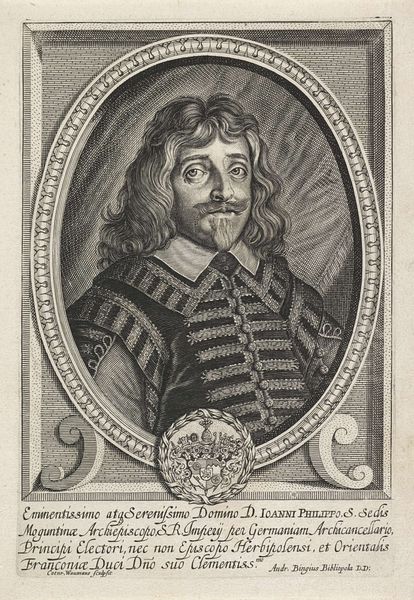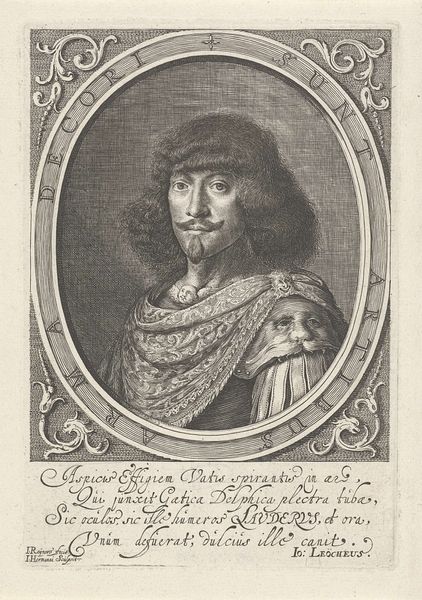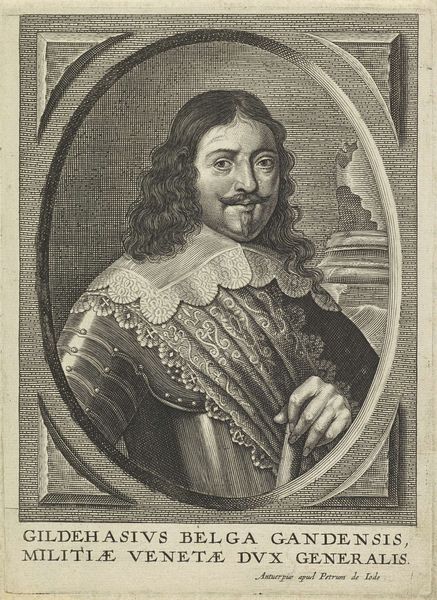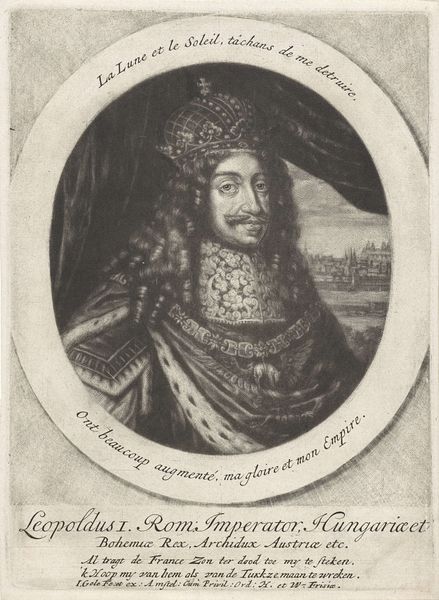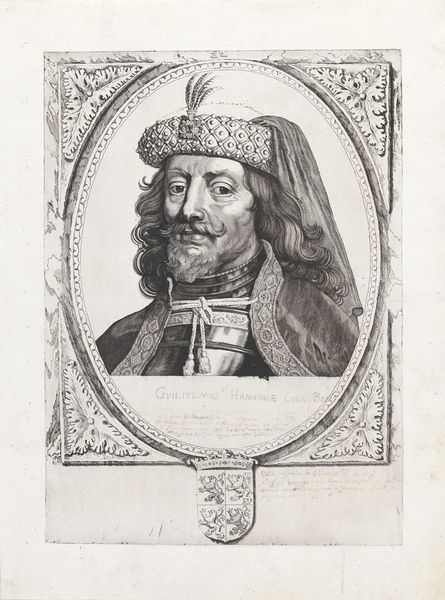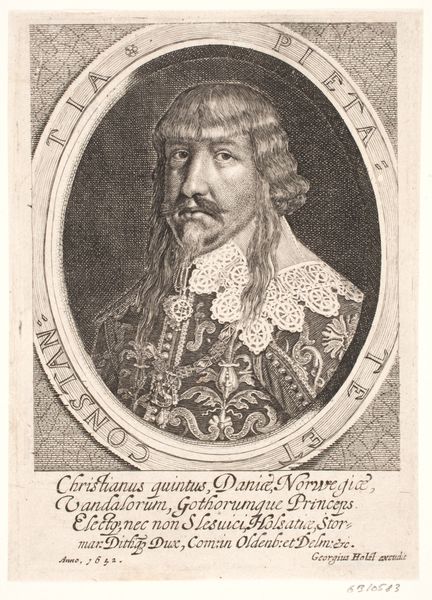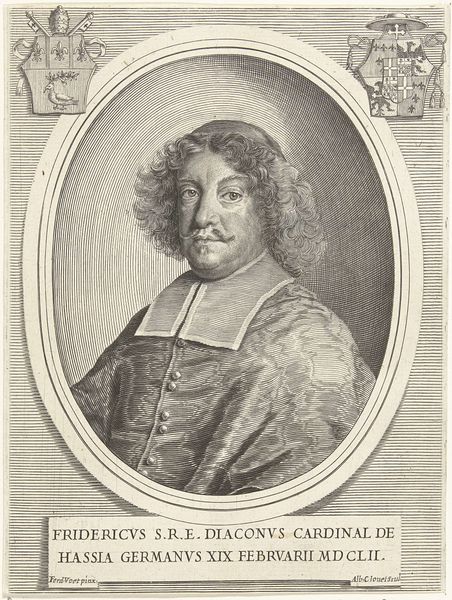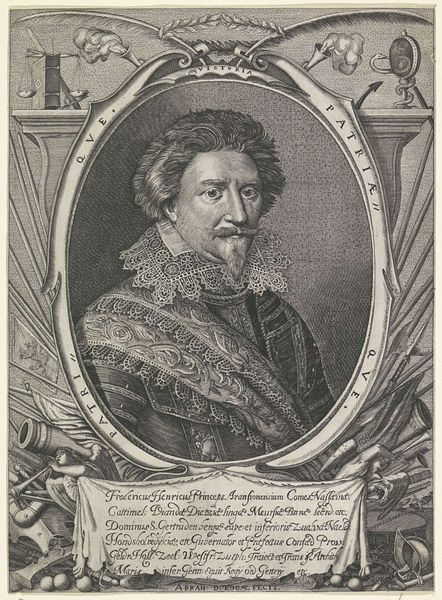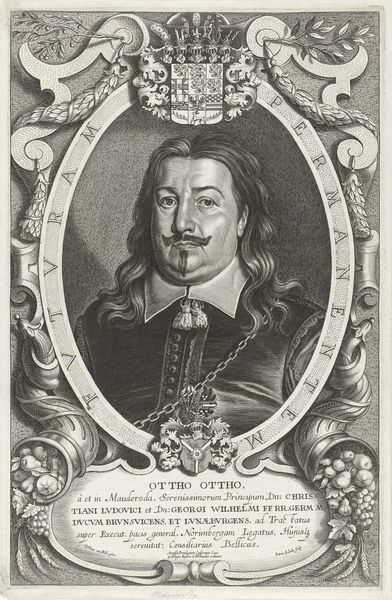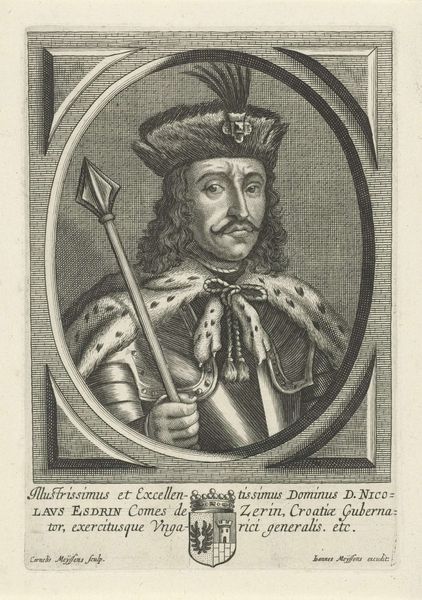
print, engraving
#
portrait
#
baroque
# print
#
history-painting
#
engraving
Dimensions: height 174 mm, width 118 mm
Copyright: Rijks Museum: Open Domain
Editor: Here we have Pieter de Jode the Younger's print, "Portret van Christiaan V, koning van Denemarken," created sometime between 1628 and 1670. It strikes me as a very formal, almost imposing composition. The detail achieved with the engraving technique is incredible. What stands out to you? Curator: The engraving technique, indeed, allows for meticulous control over line and value. Note the stark contrast achieved through the calculated distribution of hatching and cross-hatching. Observe how the artist modulates the density of these lines to articulate form and texture. It isn't just a representational strategy, but a formal dialogue between darkness and light. Editor: So, it's less about *who* it depicts and more about *how* he is depicted? Curator: Precisely. The subject's identity is secondary to the artistic problem of translating three-dimensional form into a two-dimensional plane using line alone. Consider how the oval frame further emphasizes the formal qualities of the portrait, acting as a compositional device that focuses our attention on the interplay of lines and shapes within its boundaries. It invites scrutiny not of the king, but of the construction of the image. Editor: That's fascinating! I hadn’t thought of the frame that way. It shifts the entire focus to the method, not the man. Curator: Precisely. The artist is inviting us to analyze the structures inherent within visual representation, turning this image into a complex visual object. Editor: This perspective truly unveils the artist's careful manipulations. Thank you for sharing your insight. Curator: My pleasure. Sometimes, the true subject is hidden within the seemingly simple visual elements.
Comments
No comments
Be the first to comment and join the conversation on the ultimate creative platform.
